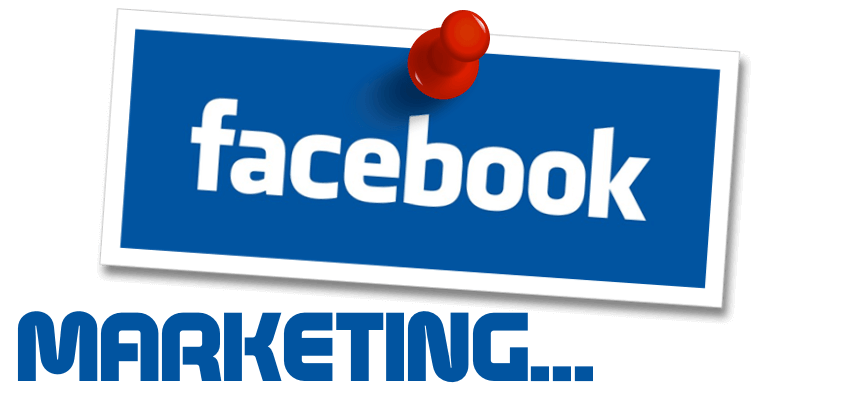Facebook has become an indispensable tool for businesses of all sizes. Whether you’re running a small local shop or managing a large corporation, maintaining an active presence on your Facebook Business Page can significantly impact your reach and engagement with your audience.
However, one common question that arises is: how often should you post on your Facebook Business Page to maximize engagement without overwhelming your followers?
The Importance of Consistency
First and foremost, consistency is key. Regular posting helps keep your brand visible in your followers’ news feeds and signals to Facebook’s algorithm that your page is active and engaging. But what does “regular” mean in this context?
Daily Posting: The Sweet Spot
Studies and expert opinions generally converge on the idea that posting once per day is optimal for most businesses. This frequency ensures that your content is seen frequently enough to remain top of mind for your audience without becoming spammy or overbearing.
Daily posting helps maintain a balance between keeping your audience engaged and allowing each post to perform well before being overshadowed by the next one.
The Role of Audience and Industry
While daily posting is a good general guideline, the optimal frequency can vary depending on your specific audience and industry. Here are a few factors to consider:
Audience Demographics: Younger audiences might be more receptive to frequent updates, while older demographics may prefer less frequent but more substantial posts.
Industry Type: Fast-paced industries like news or entertainment may benefit from multiple posts per day, whereas more niche industries might find success with fewer updates that provide deeper insights.
Engagement Levels: Pay attention to how your audience responds to your posts. If you notice a drop in engagement when you post too frequently, it might be worth scaling back slightly.
Testing and Analytics
A crucial part of determining the best posting frequency is to experiment and analyze the results. Facebook provides robust analytics tools that can help you track the performance of your posts. By reviewing metrics such as reach, engagement, and click-through rates, you can identify patterns and adjust your strategy accordingly.
A/B Testing: Try varying your posting frequency for a set period and compare the results. For example, post daily for one month, then switch to three times a week for the next month. Analyze which frequency yields better engagement.
Content Calendar: Use a content calendar to plan and schedule your posts. This not only helps in maintaining consistency but also in ensuring a mix of content types (e.g., promotional, educational, entertaining).
Types of Content and Their Impact
The type of content you post also plays a significant role in how often you should post. Here’s a breakdown of different content types and their optimal posting frequency:
Promotional Content: Promotional posts should be used sparingly. Too many promotional posts can lead to disengagement. Aim for a ratio where promotional content makes up no more than 20% of your posts.
Educational Content: Share industry news, how-tos, and tips related to your business. These posts can be more frequent as they provide value and help establish your authority in the field.
Engaging Content: Posts that encourage interaction, such as polls, questions, and user-generated content, can be posted regularly. These posts help build community and foster engagement.
Visual Content: Videos and images tend to perform better on Facebook. Incorporate these types of posts frequently to maintain high engagement rates.
Leveraging Facebook Insights
Facebook Insights is a powerful tool that provides detailed data on how your posts are performing. Key metrics to monitor include:
Reach: The number of people who see your posts.
Engagement: The number of interactions (likes, comments, shares) your posts receive.
Click-Through Rate (CTR): The percentage of people who click on links in your posts.
By regularly reviewing these metrics, you can identify which types of content resonate most with your audience and adjust your posting frequency and strategy accordingly.
Peak Times for Posting
Timing is another critical factor in maximizing the effectiveness of your posts. According to research, the best times to post on Facebook are generally during the early morning (around 9 AM), mid-afternoon (1-3 PM), and evening (after 6 PM).
However, these times can vary based on your specific audience. Use Facebook Insights to determine when your followers are most active and schedule your posts accordingly.
Avoiding Common Pitfalls
While it’s important to maintain a consistent posting schedule, there are a few common pitfalls to avoid:
Overposting: Posting too frequently can overwhelm your audience and lead to decreased engagement. Stick to a schedule that balances visibility with value.
Ignoring Analytics: Failing to review your analytics can result in missed opportunities to optimize your strategy. Regularly check your Insights to stay informed about what’s working and what’s not.
Lack of Variety: Posting the same type of content repeatedly can bore your audience. Mix up your content to keep it fresh and engaging.
The Human Touch
While analytics and data are crucial, don’t forget the human element. Social media is, at its core, about building relationships. Engage with your followers by responding to comments, asking for feedback, and showing appreciation for their support. Personal interactions can significantly enhance your page’s appeal and foster a loyal community.
Determining the optimal posting frequency for your Facebook Business Page involves a combination of consistency, audience understanding, content variety, and data analysis. Start with a baseline of posting once per day, then adjust based on your specific audience’s preferences and engagement patterns.
By leveraging Facebook Insights and maintaining a human touch, you can create a dynamic and engaging presence that supports your business goals.
Remember, there’s no one-size-fits-all answer. The key is to stay flexible, be willing to experiment, and continually refine your strategy to find what works best for your unique audience.
Expanding Your Strategy
While posting frequency is a significant aspect of managing your Facebook Business Page, there are other strategies and tips to further enhance your social media presence.
Utilizing Facebook Ads
Organic reach on Facebook can be limited, especially with the ever-changing algorithm. Investing in Facebook Ads can help you reach a broader audience and target specific demographics. Here are some tips for effective ad usage:
Targeted Campaigns: Use Facebook’s targeting options to reach your ideal audience. You can target based on location, age, interests, and behaviors.
Boosting Posts: If you have a post that’s performing well organically, consider boosting it. This can increase its visibility and engagement.
Ad Variations: Create multiple versions of your ads to see which ones perform best. A/B testing can be very effective in refining your approach.
Engaging with Followers
Engagement goes beyond posting content. It’s about creating a community where followers feel heard and valued. Here’s how to foster engagement:
Prompt Responses: Reply to comments and messages promptly. This shows your audience that you’re attentive and value their input.
User-Generated Content: Encourage followers to share their experiences with your products or services. Feature their content on your page to build a sense of community.
Interactive Content: Use polls, quizzes, and live videos to engage your audience. These formats are interactive and can increase engagement significantly.
Content Curation and Creation
Maintaining a constant stream of fresh content can be challenging. Here are some strategies for content curation and creation:
Content Calendar: Plan your content ahead of time using a content calendar. This helps in maintaining consistency and ensures a good mix of content types.
Curated Content: Share relevant articles, news, and insights from industry leaders. This positions your page as a valuable resource.
Behind-the-Scenes: Show behind-the-scenes looks at your business. This humanizes your brand and builds a deeper connection with your audience.
Leveraging Facebook Tools
Facebook offers various tools to help businesses optimize their pages. Make sure you’re taking full advantage of these:
Facebook Insights: Regularly review your page’s performance. Insights provide valuable data on which posts are performing well and when your audience is most active.
Facebook Business Suite: This tool helps you manage all your business’s Facebook and Instagram activity in one place. You can schedule posts, respond to messages, and view analytics.
Creator Studio: Use Creator Studio to manage your content, track performance, and monetize your page if applicable.
Monitoring Trends and Adapting
The digital landscape is always evolving. Staying updated with the latest trends and adapting your strategy accordingly is crucial:
Stay Updated: Follow industry news and social media trends. What works today might not be as effective tomorrow.
Experiment: Don’t be afraid to try new types of content or posting strategies. Monitor the results and adapt as needed.
Feedback Loop: Encourage feedback from your audience. Use their input to improve your content and engagement strategies.
Building a Community
A thriving Facebook page is one where followers feel like they are part of a community. Here’s how to build and nurture that community:
Exclusive Groups: Create a Facebook Group for your most loyal customers or fans. This can be a space for deeper interaction and engagement.
Events: Host virtual events, such as webinars, Q&A sessions, or live product demonstrations. These events can foster real-time engagement.
Customer Stories: Share stories and testimonials from your customers. This not only builds credibility but also fosters a sense of community.
Measuring Success
Success on Facebook isn’t just about the number of likes or followers. Here are some metrics to consider:
Engagement Rate: This includes likes, comments, shares, and clicks. A high engagement rate indicates that your content is resonating with your audience.
Reach and Impressions: These metrics show how many people are seeing your content. Increasing reach can lead to more engagement and followers.
Conversion Rates: If you’re using Facebook to drive sales or leads, track how many of your followers are converting. This is a direct measure of your page’s effectiveness.
Managing a Facebook Business Page effectively involves more than just frequent posting. It requires a strategic approach that includes understanding your audience, creating valuable content, engaging with followers, and leveraging Facebook’s tools.
By maintaining consistency, experimenting with different strategies, and continuously monitoring your performance, you can create a thriving Facebook presence that supports your business goals.









